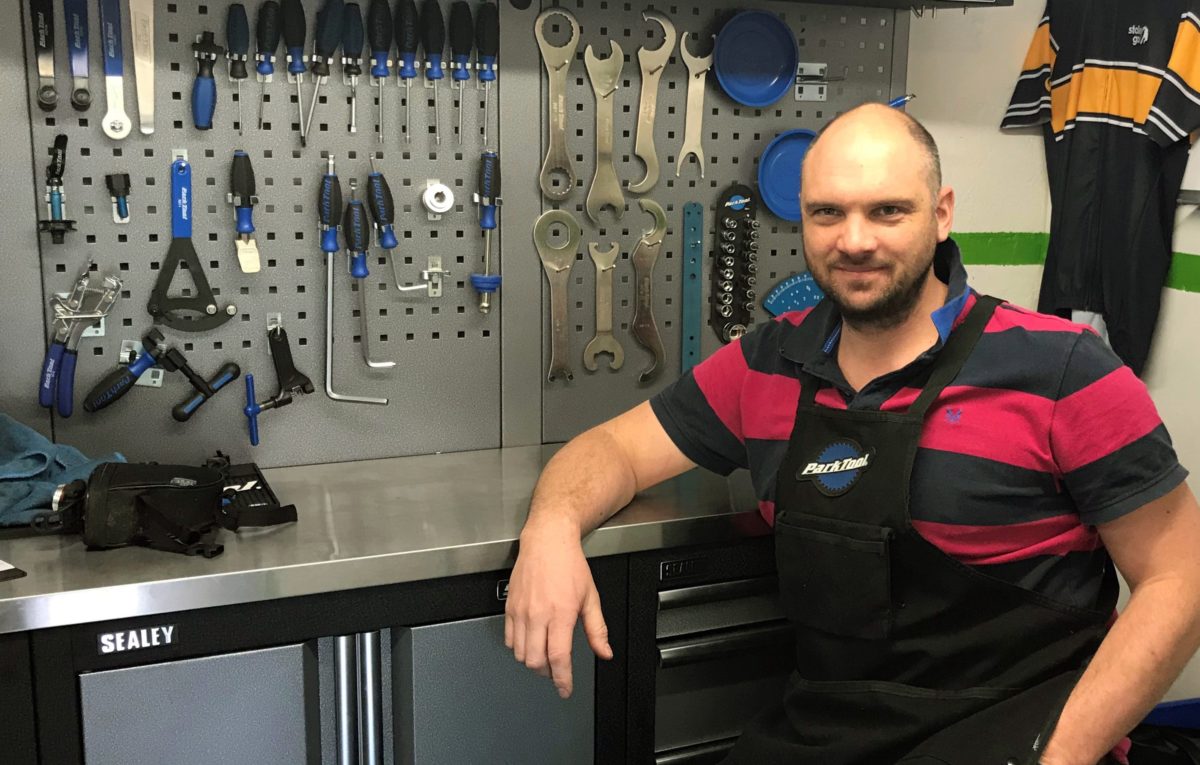
We asked Bruce Karsten, owner of Gravity Cycles, what he considers to be the top 10 must-have bike tools for any home workshop. Save this blog as a handy checklist for a well-stocked toolbox for when you need to change that chain or true that wheel.
If you’re new to cycling, you’ll quickly realise that maintenance is absolutely vital for keeping your bike healthy and roadworthy. What’s more, learning these simple but important tasks will save you time and money in the long run. You’ll have a better understanding of how your bike works and fewer problems will be left to worsen between services. So what could be more satisfying than learning how to look after your bike for yourself?
Work Stand
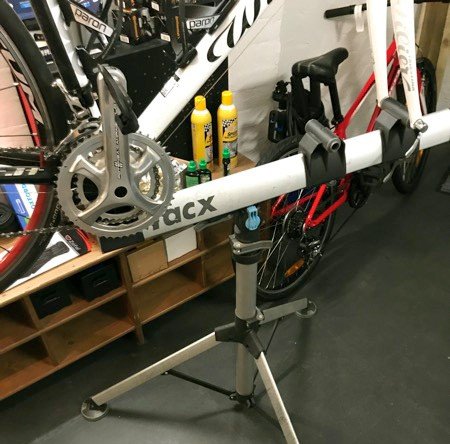
For many years I turned my bikes upside-down or leant them against a chair. Then I bought my first work stand and what a game-changer that was! If you are going to work on or clean your bike regularly this can save you so much grief! There are various options, but most stands allow you to either clamp the seat post, top tube or remove and fix your front wheel. All raise the bike to a convenient height and allow you to rotate the cranks.
Having the ability to secure the bike so you can turn the cranks and work with both hands seems trivial. But once you’ve used, you’ll wonder how you managed before.
Chain Wear Indicator
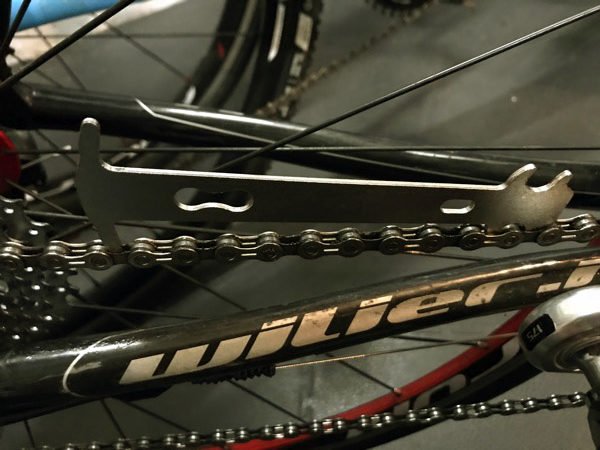
It’s a frequent scenario: your gears are slipping and you can’t remember when last you had a service or changed your chain. A good place to start is checking whether your chain has worn beyond its useful life.
Place the chain wear tool on the chain with the two measuring pins in between the chain links. Move the measuring slider forward until the measuring pins can’t expand anymore and read the gauge. Readings above 0.5 indicate a worn chain meaning it’s time for a new one. There are bike tools which are easier to use, for example, fixed versions where if the longer pin can slot into the gap in the chain, your chain is too worn.
Ensuring your chain hasn’t worn out or stretched significantly prolongs the life of your cassette and cogs so it’s worth keeping an eye on, especially if you use your bike for commuting.
Chain Whip & Sprocket Removal Tool
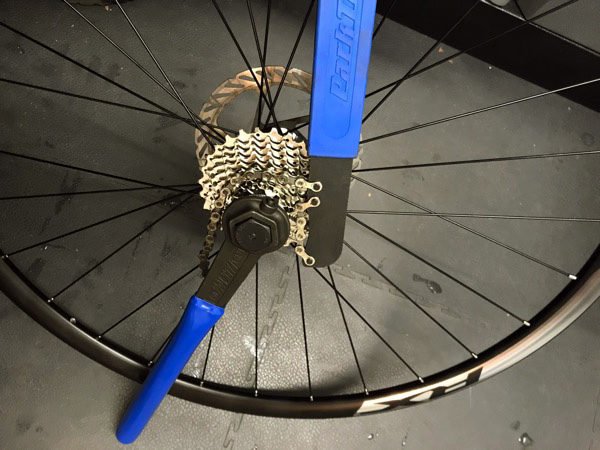
Either you’ve worn out the cogs on your cassette or you’ve decided to head to the French Alps (or Box Hill) and need a bigger ratio of gears. These two bike tools will allow you to hold the cassette still (chain whip) and turn the lock ring (sprocket removal tool) so you can remove the cassette. Some sprocket removal tools will come as one piece and others will have interchangeable sockets that would allow you to remove either Shimano or Campagnolo cassettes. Make sure to buy the correct lock ring to match your cassette brand.
Chain Link Remover
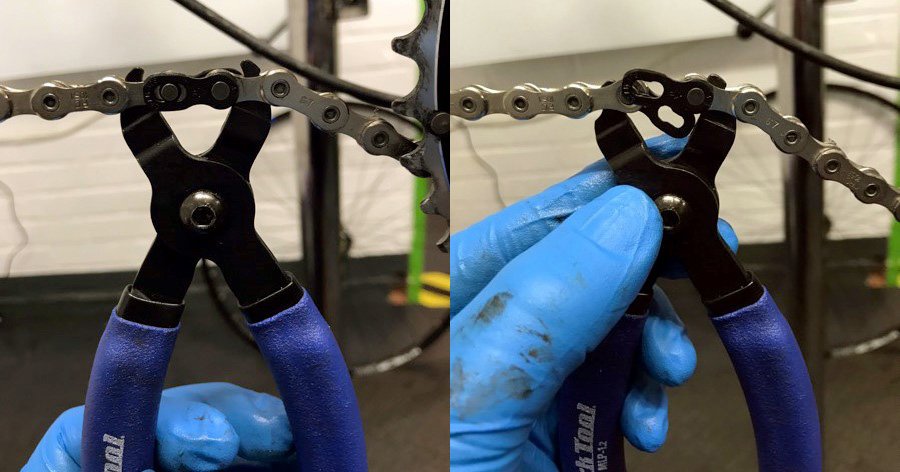
After checking your chain for wear and deciding that you need a new one, you may notice it has a quick-link or power-lock (SRAM). Perhaps the new chain has a quick-links. This tool easily allows you to add or remove these handy links. Cleaning or changing your chain is a much less daunting task when you have one of these.
Place the pincers on either side of the link and squeeze to close it. Then pull the handles apart to extract a link. When putting the link back in, the tension on the chain will lock it again.
Chain Pin Tool
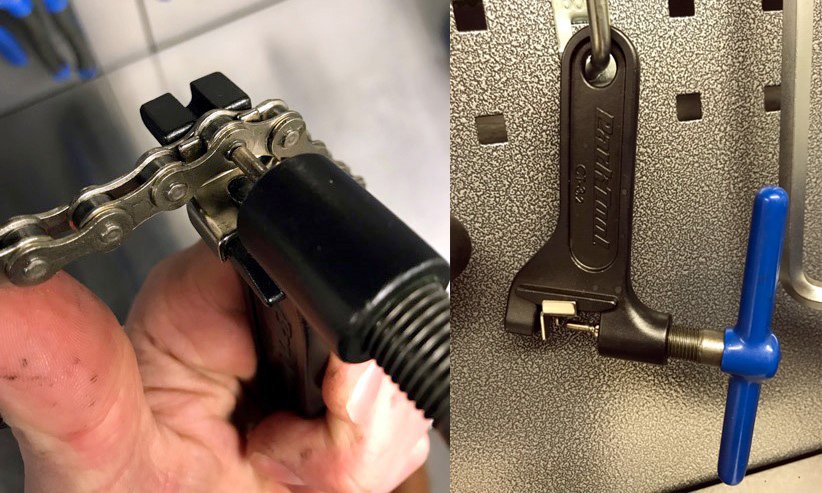
If your chain doesn’t have a quick-link or you’re installing a Shimano or Campagnolo chain, you’ll need one of these to insert the new pin into the chain to connect it. The tool can also be used to drive out or remove a pin if you’d like to remove the whole chain. When installing a new chain, it’s always worth inserting a quick link for future repairs or winter cleaning. Also before purchasing, make sure that you buy a pin tool that is compatible with your groupset! If you ask your local bike shop they will point you in the right direction.
Torque Wrench and Sockets
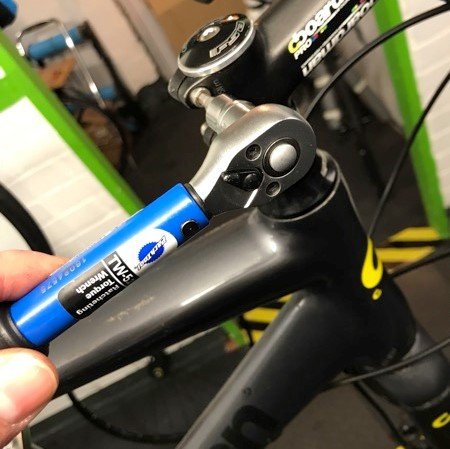
Ever wondered what the numbers with the ‘N’ symbol on your frame and components are? This stands for Newtons Metres, the unit used to measure tightness, or ‘Torque’. Manufacturers recommend how tight the bolts should be on the various points around your bike. Over tightening a bolt can cause it to thread or even worse, do damage to the components, especially when fastened to a carbon frame. A torque wrench will allow you to set the desired torque and stops tightening when you’ve reached the limit.
Floor Pump
A necessity. No one wants to sit there with a hand pump for hours pumping up a tyre. A good quality floor pump will blast air into your rubber and tell you exactly how much is in there ensuring you have the correct pressure for the ride.
Pedal Wrench
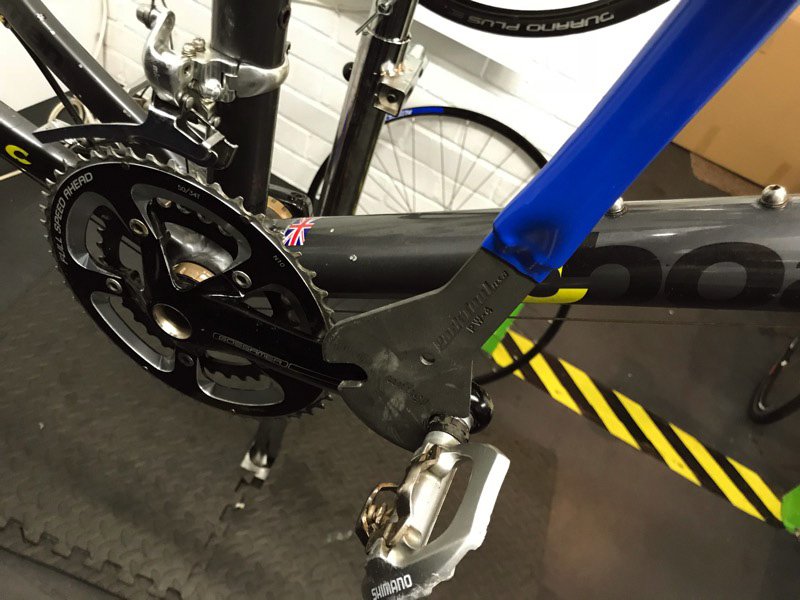
If you’re packing up your bike into a car or bike box, the pedals often get in the way but can be a pain to remove without the right bike tools.
Some pedals can be removed with an oversized hex tool (or allen key), but many require a spanner. A good pedal spanner will have some soft coating to protect your cranks and some are off-set to allow for bikes with less clearance from the chain stays.
Top Tips:
Remember to add a little anti-seize grease to the spindles when you replace the pedals. It can go a long way to stopping them from seizing, especially after a wet winter.
Don’t over-tighten the pedals when you put them back, they’re designed to not come loose.
The left pedal is always loosened in a clockwise (reverse) direction so bear that in mind before you make it even tighter!
Cable Cutters and Needle-Nose Pliers
Your brakes and gears will likely be cable operated unless you are one of the lucky cyclists to ride bikes with DI2 and/or hydraulic brakes. Either way a good, sturdy set of needle nose pliers and sharp cable cutters will always have a place in the cyclist’s home toolbox. Cable cutters do what they suggest, they provide a quick clean cut ensuring your cable ends don’t fray and you can easily attach a steel cable end to protect yourself from the sharp strands.
Needle nose pliers are a lifesaver for tensioning the cable in your front mech when setting your gears up. In your cycling lifetime, you will likely be in a situation where you need to grab something in a tight area with a bit of welly. These are the tool for the job.
Thanks to Bruce Karsten, owner of Gravity Cycles. Bruce offers full services for £55 in the Surrey area.